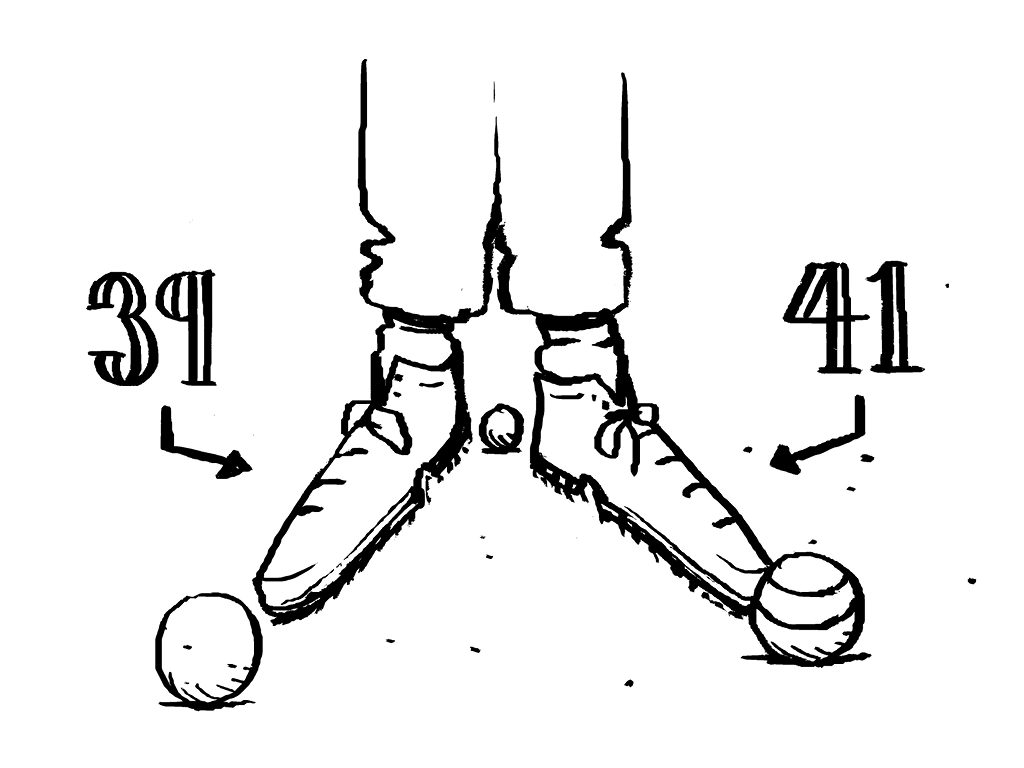PÉTANQUE IN 1 MINUTE

THE SHORT VERSION
Simply put, pétanque is about throwing balls as close as possible to the small ball, also known as the “jack.” But first, the jack is thrown and must land somewhere between 6–10 meters away. Each team then takes turns throwing one ball at a time. The team whose ball is farthest from the jack keeps throwing until they get a ball closer than the opponent’s closest ball. Then it’s the other team’s turn.
Once all balls have been thrown, the team with the closest balls to the jack scores one point for each ball closer than the opponent’s best. Only one team scores points each round. And the winners get to throw the jack for the next round.
First to 13 points wins. C’est simple!
TEAM SETUP - OR WHO PLAYS AGAINST WHOM?
Pétanque is always played with two teams competing against each other.
TRIPLETS: Played three against three, with two balls each.
DOUBLES: Played two against two, with three balls each.
SINGLES: Played one against one, with three balls each.
MASTERCLASS
THE FEET
Stand with both feet inside the circle, facing the direction of play, and try to keep your weight balanced between your feet. It’s very simple in theory, but alas, so easy to forget when the bar is calling and the music is playing. But don’t worry, mon ami, there’s a time for everything.


THE KNUCKLES
Make sure your knuckles and fingertips point upward toward the sky when the ball leaves your hand. You might as well greet your opponents while your hand is in a waving position.
THE ARM
For shooting an opponent’s ball away: pull your arm as far back as you can. Swing it forward and upward, and release the ball when it’s at shoulder height. Keep your hand held high in the air long after the ball has landed. It’s a good tip - even if it has nothing to do with the actual game of pétanque. But remember it, because it makes you look mega‑cool and professional on the gravel court.


THE BRAIN
Focus when you throw. Pétanque is a mix of concentration, technique, and tactics. And subtly psyching out the other team to break their focus is one of pétanque’s finest skills.
DEAD BALL AND DEAD JACK
If the jack is hit and stays on the court, play continues with the jack in its new position. Lines, edges, and walls are considered ‘dead.’ If a ball dies by hitting a line or wall, it’s out of play (but you get it back in the next round).
If the jack dies, the game ends. If only one team has balls left unthrown, they score points equal to the number of balls they still have. If multiple teams have balls left, no points are awarded, and a new game starts immediately.

Sneaky cheating!
Being able to twist the rules is often the difference between cheers and disappointment in pétanque - provided you do it with style and don’t get caught. And since pétanque with us is always good-natured fun, here are a few classic tricks worth knowing.
THE SHOE TRICK
Get two different sizes of the same shoe model. When measuring the distance between two balls, use the difference in sole length to your advantage. A classic stroke of genius.

THE ELASTIC MEASURING TAPE TRICK
The technique speaks for itself. Cheat with the centimeters, and stick to your claim. The art lies in your confidence. You must take control and show determination on the level of the French president.

THE BROWN-NOSER TRICK
Praise your opponent excessively. A bad throw is beautiful, a good one is world-class. Give high-fives and hugs. Don’t be ironic—be charming and smooth. That way, your opponent loses focus. Perfect!

